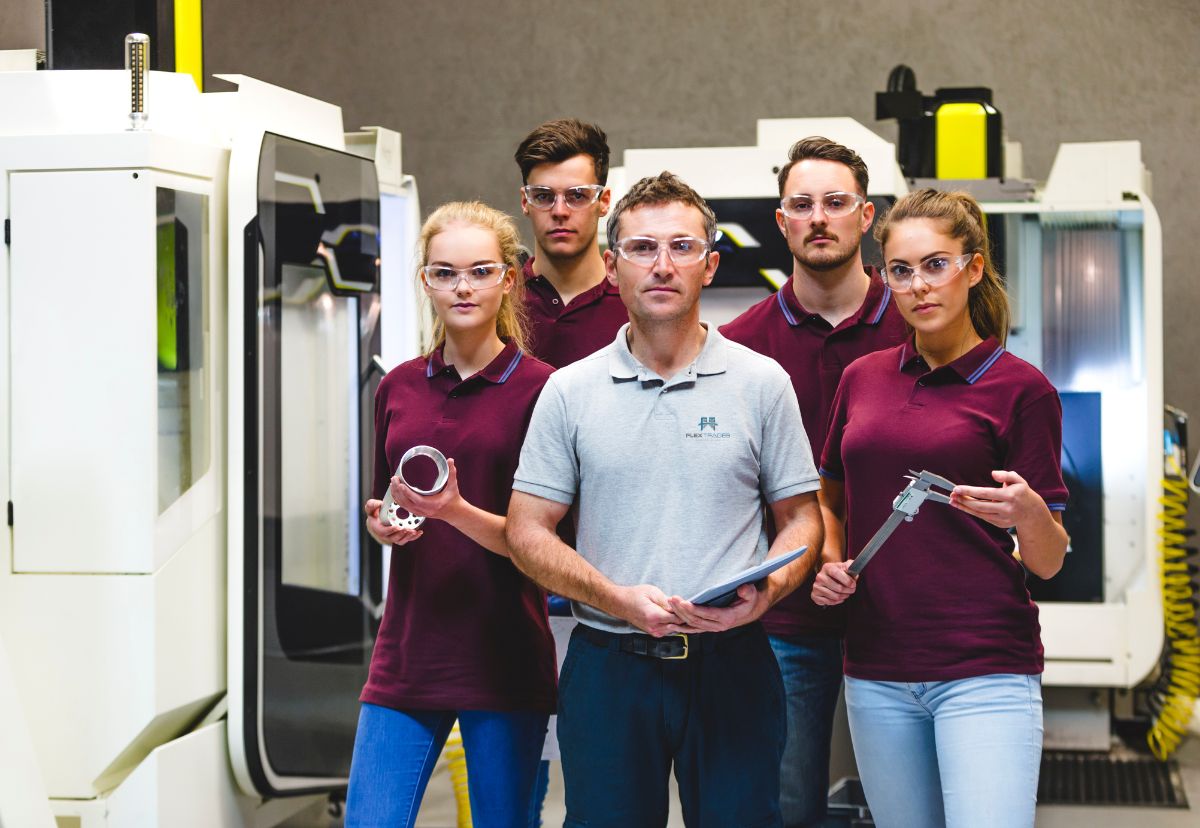Educators at universities and colleges across the country, in just about every field, invite employers into their classrooms to give presentations to students. Employers embrace the opportunity to show students the work, pay, and benefits their company offers. Some employers take it further and provide tools that will help graduates get their first job and be successful.
When FlexTrades does a ReTool Employer Presentation for students, we show that we offer a rewarding career in the trades with excellent benefits. But we also understand that many students have other companies in mind, have already accepted jobs, or have plans to put their education to work elsewhere. Half of our presentation is catered to ANY job seeker, even if they aren’t interested in FlexTrades at the moment.
Below is an outline of the script for our ReTool Employer Presentation.
Act 1: About FlexTrades
The first act of a FlexTrades employer presentation is shamelessly, and genuinely, promoting the opportunities our company offers. We name drop some of our clients who are among the nation’s largest manufacturers in heavy agriculture, aerospace, consumer products, and more. We talk about our need for skilled technicians throughout every step of the manufacturing process.
The pay and benefits FlexTrades offers to employees are competitive nationwide. We talk about travel and how many of our technicians see travel as another benefit; seeing the country and enjoying hobbies and activities they can’t do at home. To close Act 1, we talk about the many opportunities for growth within the company and how to get started pursuing a career with us.
Act 2: Career Tips & Advice
Degrees, certifications, and hundreds of hours of time-on-tool get you a baseline of knowledge to do the job. But a resume must get you an interview, and that interview must go well before you ever get paid for those skills.
Our longest slide in the entire presentation is called “Resume & Interview Tips.” We share tips and advice that apply to anyone listening, whether they’re interested in FlexTrades or not. For example, calling out your skills and certifications correctly on a resume can determine whether you even get a chance to interview. Preparing for an interview by researching the company and practicing your responses to tough questions is equally important.
Act 2 answers one of the most important questions we should ask: What’s ahead in manufacturing? We talk about Industry 4.0 and what it means. You’ll need to hear our presentation for the full answer, but (spoiler alert) robots are not coming to take our jobs! Skilled tradespeople will always be needed, but we will need to adapt and continue to learn new skills.
Act 3: Questions & Answers
We place a lot of information in our ReTool Employer Presentation, so we always open it up to questions after the slideshow. Many students are curious to hear more about travel, where they might get to go, and how we get them there. Some students ask what tools they need to bring on a project (hint: very few). We are often asked what an apprentice-level ReTool employee can expect on their first few projects.
Instructors usually jump in to ask questions, too. They know their students better than we do, so they often anticipate questions students haven’t thought of yet. Some instructors even ask about how they can work on a FlexTrades project over summer break, or once they’ve retired from teaching.
We’re always excited to dig deeper into any of the topics we cover!
Conclusion
We understand that we aren’t the only employer out there, but we might be the perfect fit for a student who hasn’t found the right job yet. Or we might be a better fit when they’re looking for a change later in their career. Some of the students we speak to will go on to manage a facility or start their own company and may need FlexTrades technicians to get the job done.
We genuinely care about the next generation of skilled tradespeople and the world of manufacturing that they are entering. We want to encourage students in trade school programs to stay on the path and start a great career. If you’re an educator or instructor at a trade school, we would love to show you and your students our ReTool Employer Presentation live!
Ever since COVID-19, virtual presentations have become extremely popular. To book a ReTool Virtual Employer Presentation for your class, just click here to pick a time that works best for you!
If you’d like us to make an in-person presentation, or if you have any questions, please reach out to marketing@flextrades.com. If you or someone you know is looking for work, resumes can also be sent to marketing@flextrades.com.
We appreciate your time today, and look forward to working with you and your team soon.








